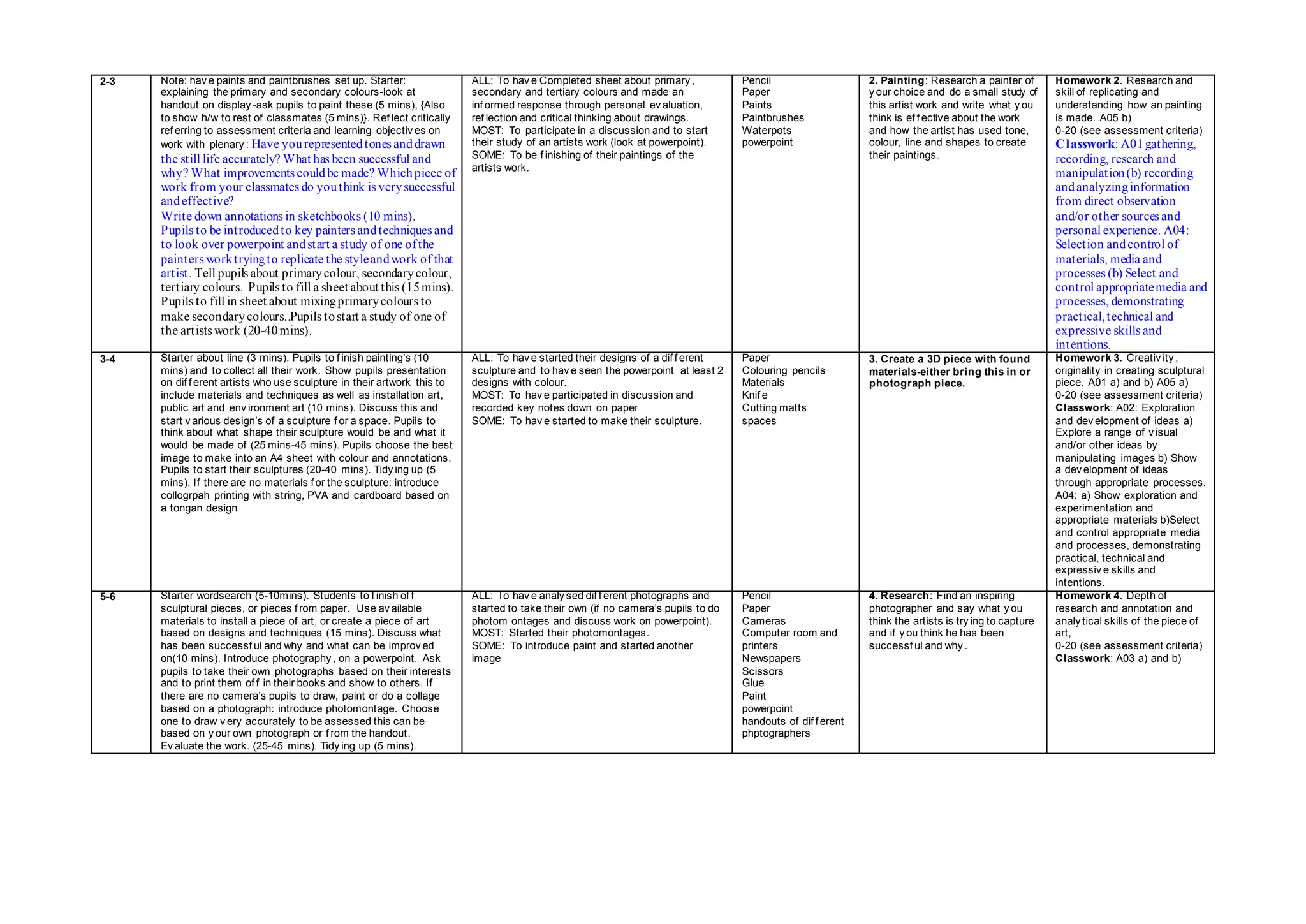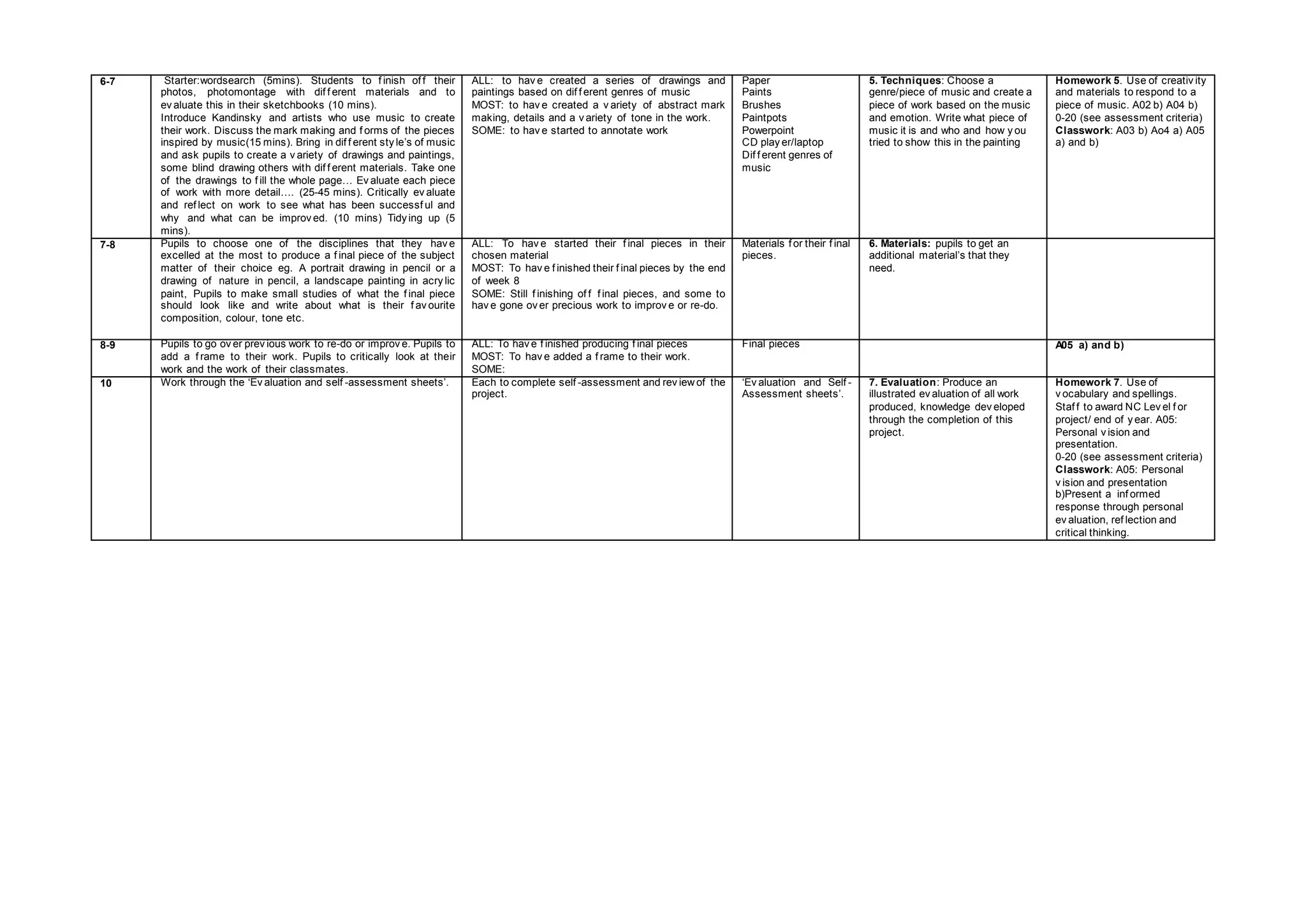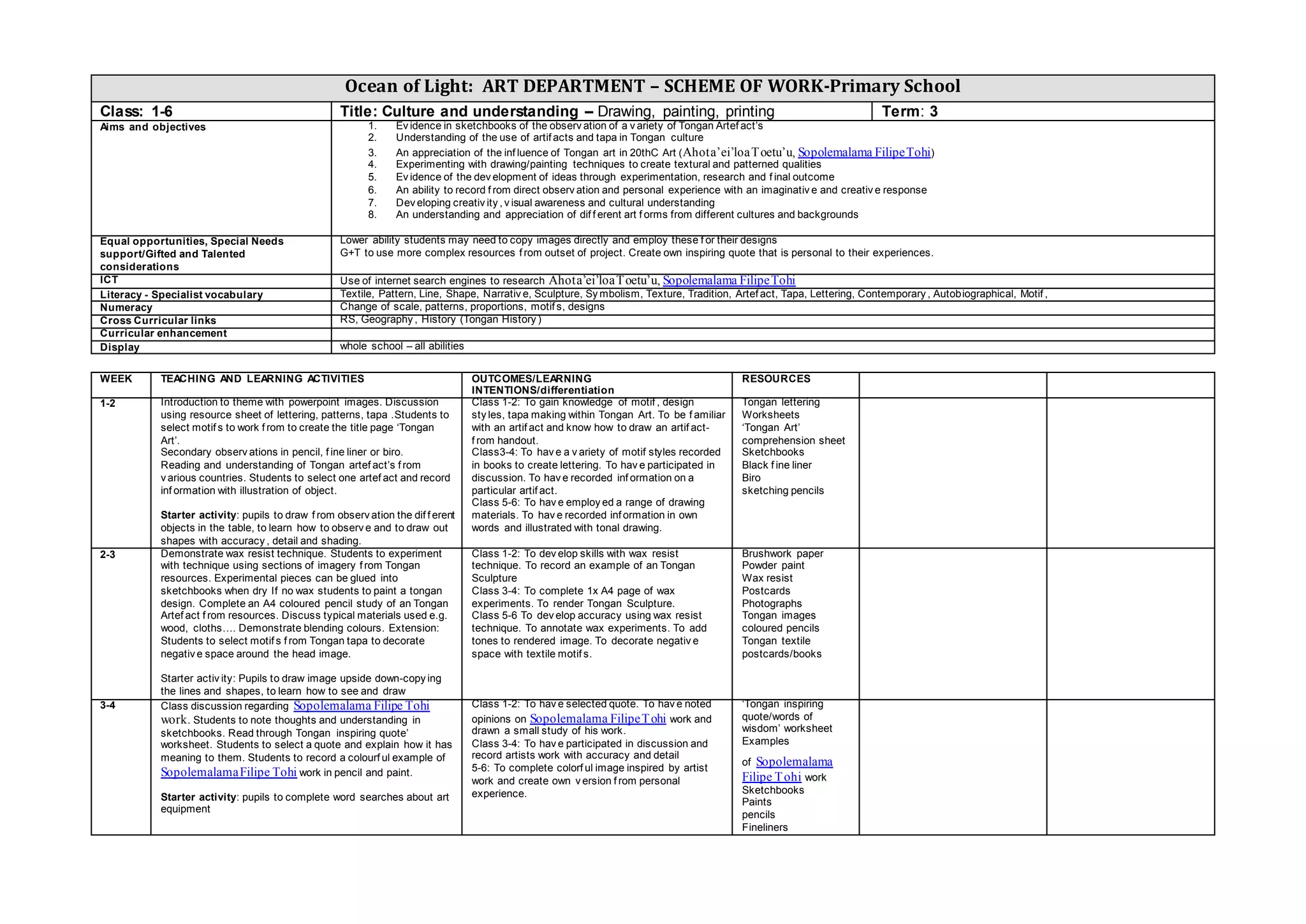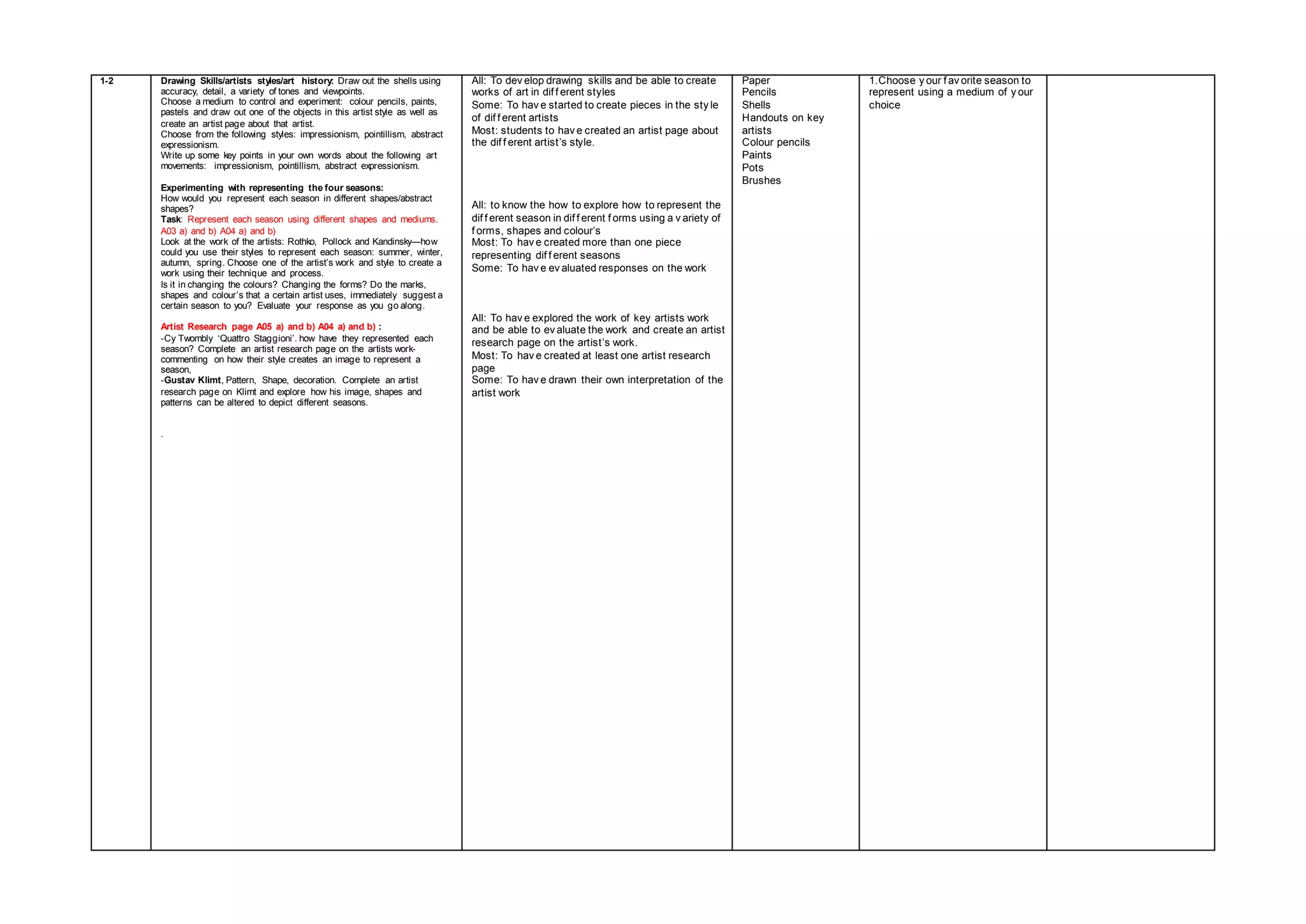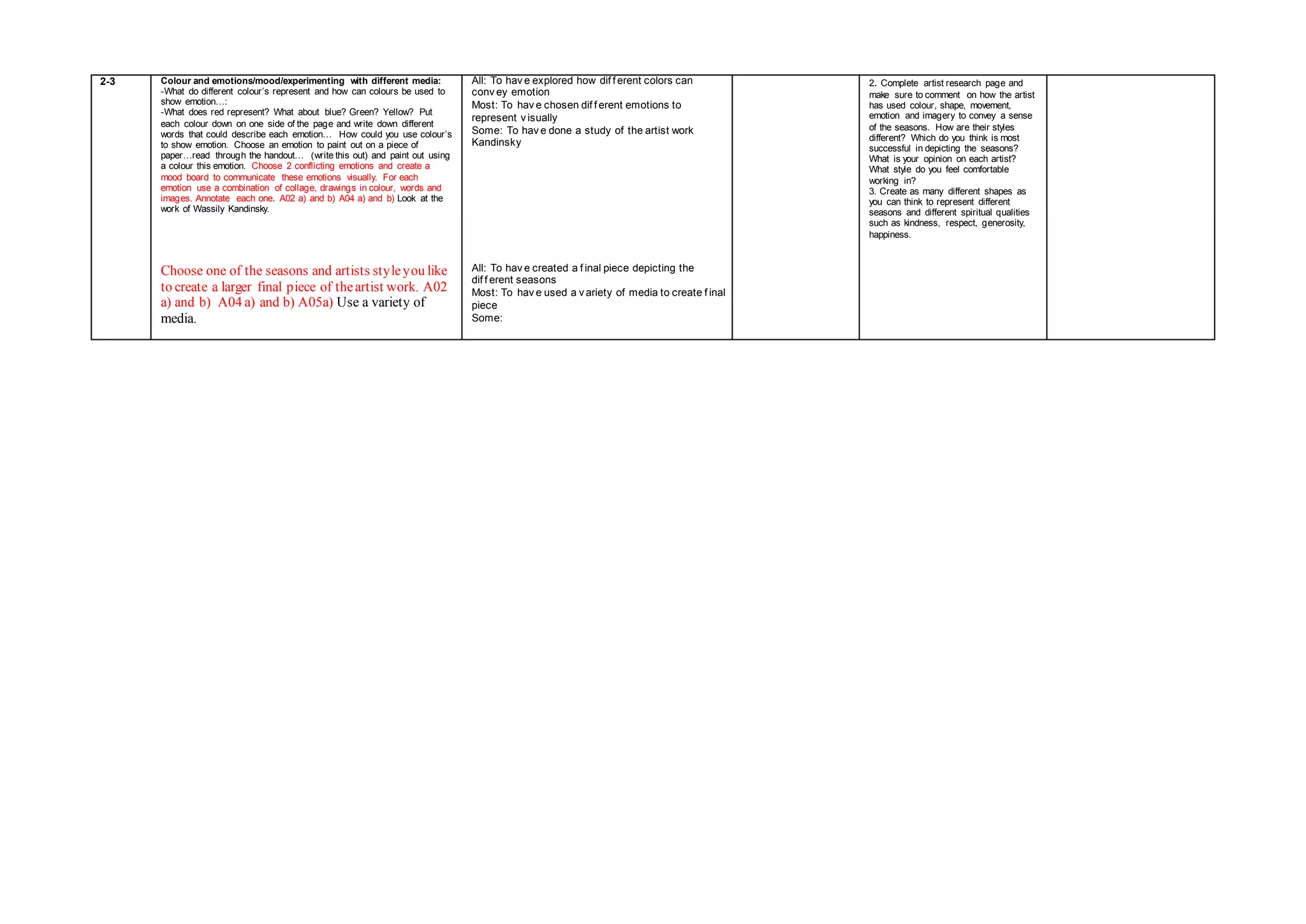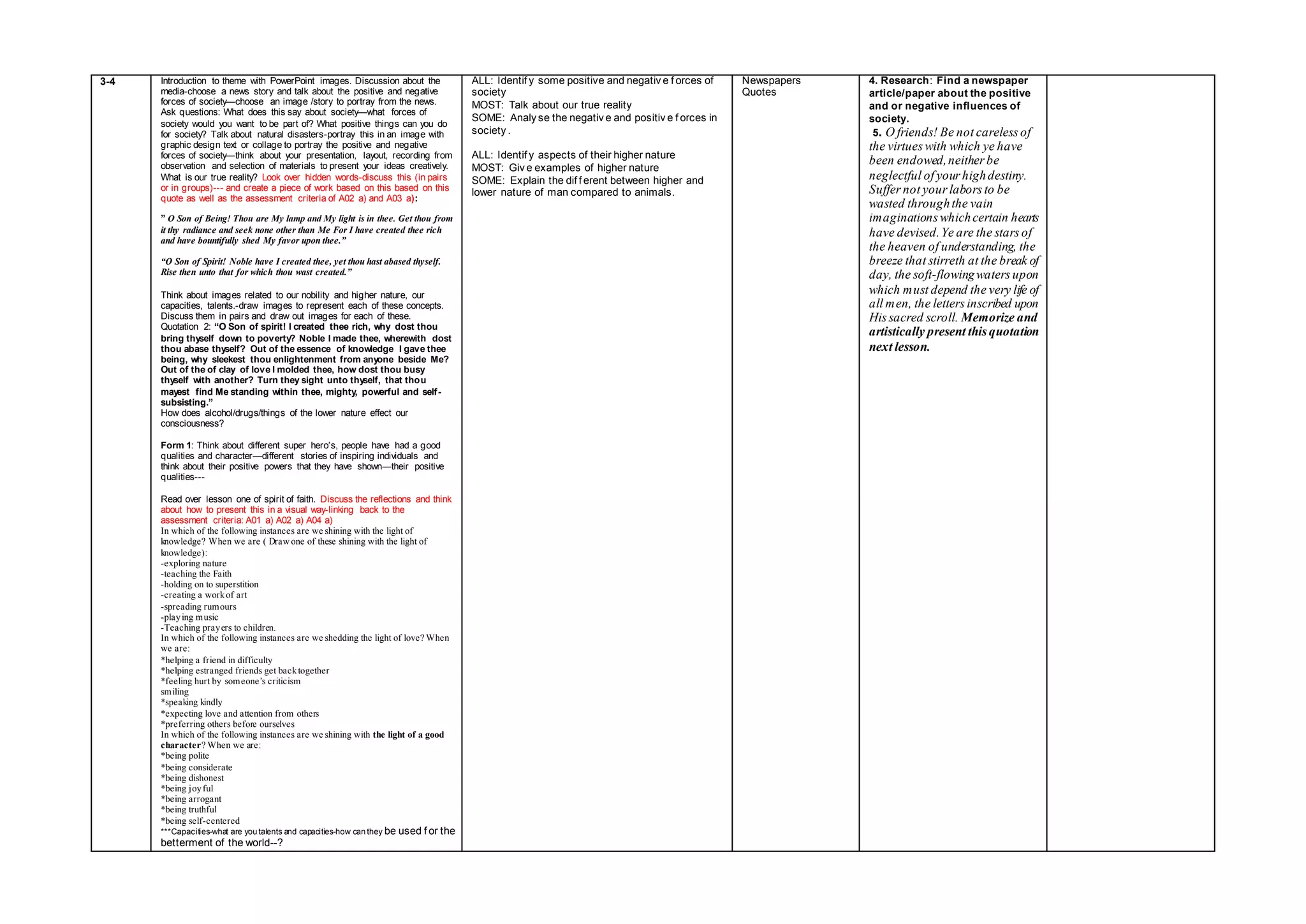This document provides an overview of the scheme of work for an art department covering years 7 through 11. It focuses on Tongan art, including drawing, collograph printing, and painting techniques. The aims are to develop students' observational drawing skills, understanding of Tongan culture through its artifacts, and ability to experiment with techniques to create textural patterns. Students will study works by Tongan artists and create their own art influenced by Tongan styles. The scheme involves demonstrations of techniques like wax resist printing, opportunities for research, and a final evaluated piece of students' Tongan-inspired art.



